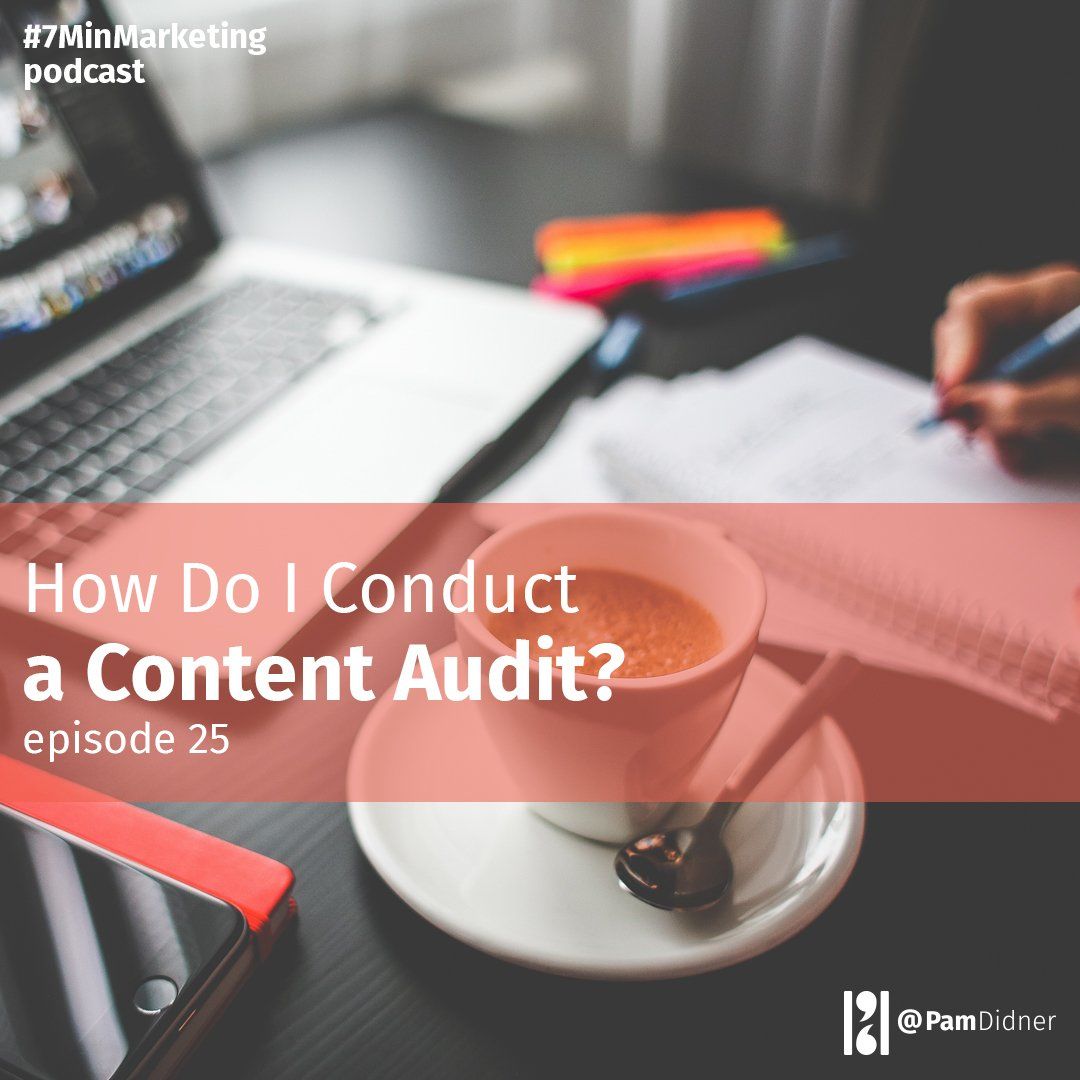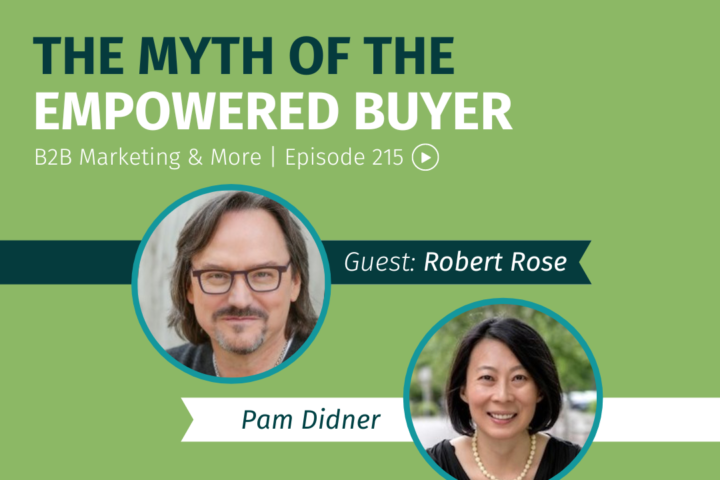
Welcome to another episode of 7-Minute Marketing with Pam. My name is Pam Didner, and I love sharing a little dose of B2B, digital and content marketing seven minutes at a time.
A friend, Erick, was tasked to conduct a content audit and asked me if I have a template that he can use. I sure do.
In general, content audits are conducted for three reasons:
- Some audits just have a grasp of what content is out there and share that with the whole team so that everyone has a holistic view. People who are responsible for outreach can pick and choose what to share. In a way, you create a master list content. In this situation, you may only need top 50 most popular content pieces or the most recent content in the past one year.
- It’s time to redesign the website. You need to have a comprehensive view of content to determine which one to keep and which one to toss. You can also need to know what additional content which needs to be created.
- Some clients want to understand if it’s possible to map existing content to different purchase journeys, then determine if there is any content gap in each stage. The audit result will guide the future editorial planning. In this case, you map content based on purchase or customer journeys.
A quick note: content doesn’t limit to blog posts. It is any original content which has was for your company. It includes video, podcasts, press releases, webinars, case studies, white papers, infographics, eBook, collaterals, and other forms.
Here is the truth: there is no one-size-fits-all standard content audit template. You need to understand your own or your client’s objectives, then create a customized template or modify an existing template.
For these three types of content audit, I’ve developed two simple templates.
The first is a quick understanding of the content landscape. The second, a comprehensive list of content on your website. For both, the template is the same. In the end, it is about creating a master list. Therefore, you have a list of categories such as these:
- The title of content,
- URL,
- Purchase journey stage (awareness, consideration or purchase),
- Content format,
- Language,
- Persona,
- Search keywords,
- and so on.
I created 15 categories that you can pick and choose what will fit your objectives.
For the third audit type, the template is based on your customer’s buying journey. You need to determine your customer’s purchase journey. In my template, I listed four stages: Learn, Plan, Decide, and Purchase. These stages are more B2B-centric, so you will need to make sure they align with the stages your customers and prospects go through.
- Learn: Your customers have issues that they need to address. What are they? What do they need to know about these problems?
- Plan: What can they do to solve these issues? How should they go about it?
- Decide: What tools do they need to solve their problems? Or What do they need to help them make a right decision? Who should get involved?
- Purchase: How can they build the business case to make a purchase?
Make sure you identify the stages well. When you review the content, you can categorize them in the relevant stage. You may find some content will cover more than one stage, which is OK. Oh, if your company offers various products and services, you can also tie the content with specific products and services.
When you finish, you will notice that there are usually gaps in certain stages you will need to address.
Before sharing the templates with Erick, I told him that he needs to be clear about his content audit objective. Why does he conduct the audit? That will determine which template to use.
I also told him that content audit is boring, unsexy and thankless. If he does a great job, nobody cares. If he does a lousy job, nobody can tell the difference. So, why bother? Well, here is the thing. Even though no one can tell you that you did a bad job, the analysis you present will have ramifications for future editorial planning, website’s design, and the overall customer experience. Therefore, it’s important to take time to do it right. The devil is indeed in the detail.
If you are interested in the templates, please email me to pam@pamdidner.com. I’ll be more than happy to share the templates with you.
Send me your marketing questions via Twitter @pamdidner
Let me help you with your marketing challenges.
Be well. Until next time.



